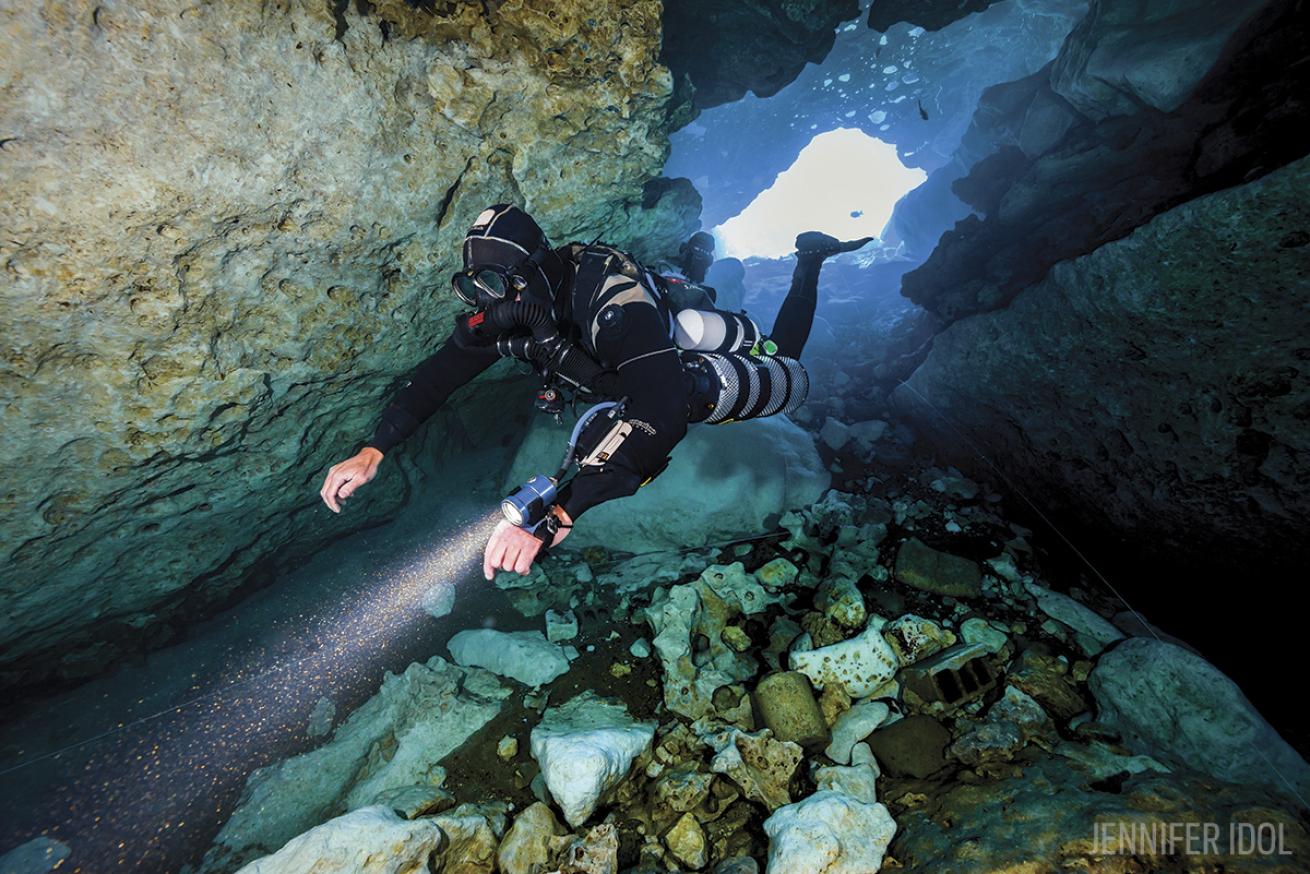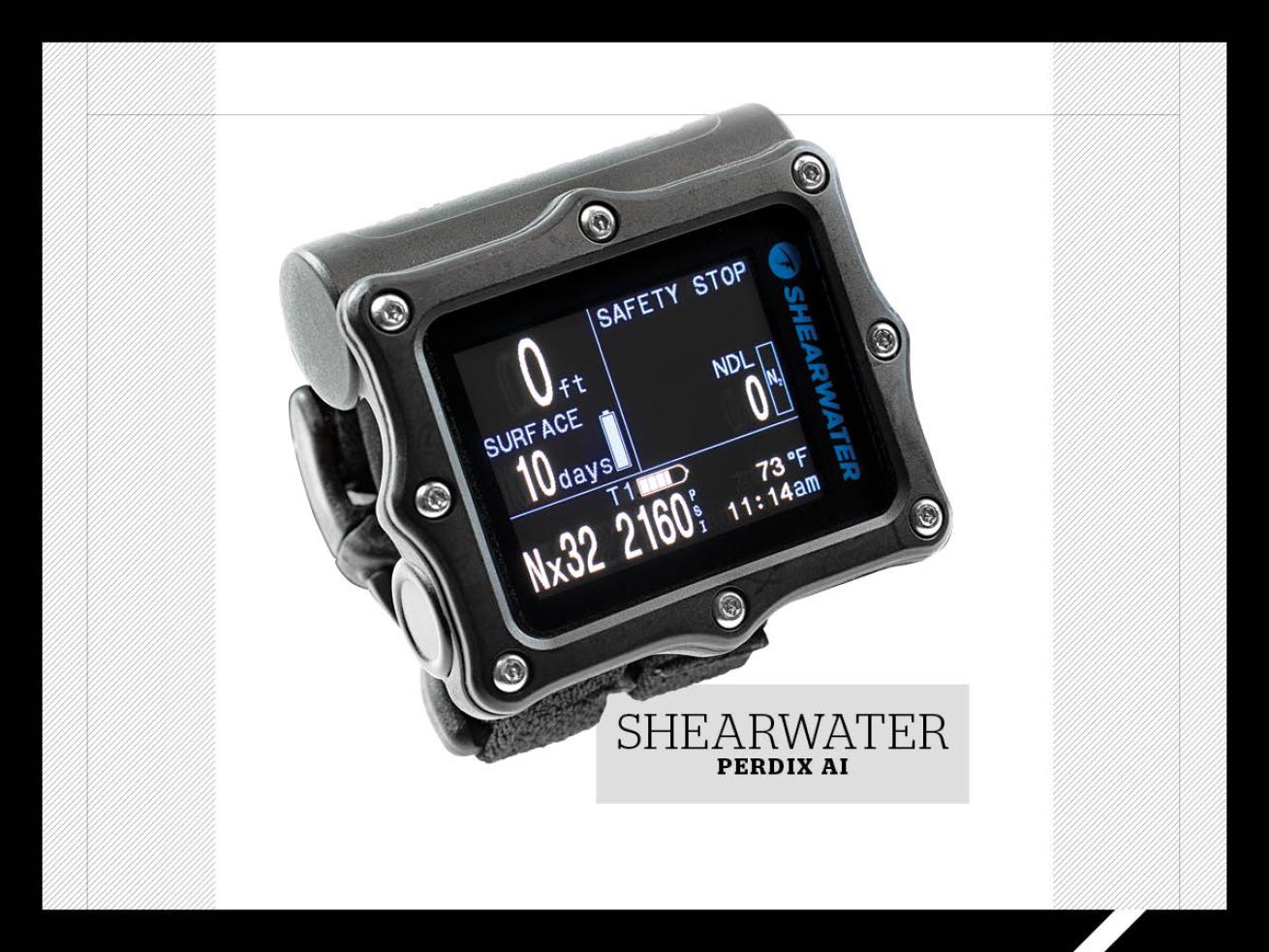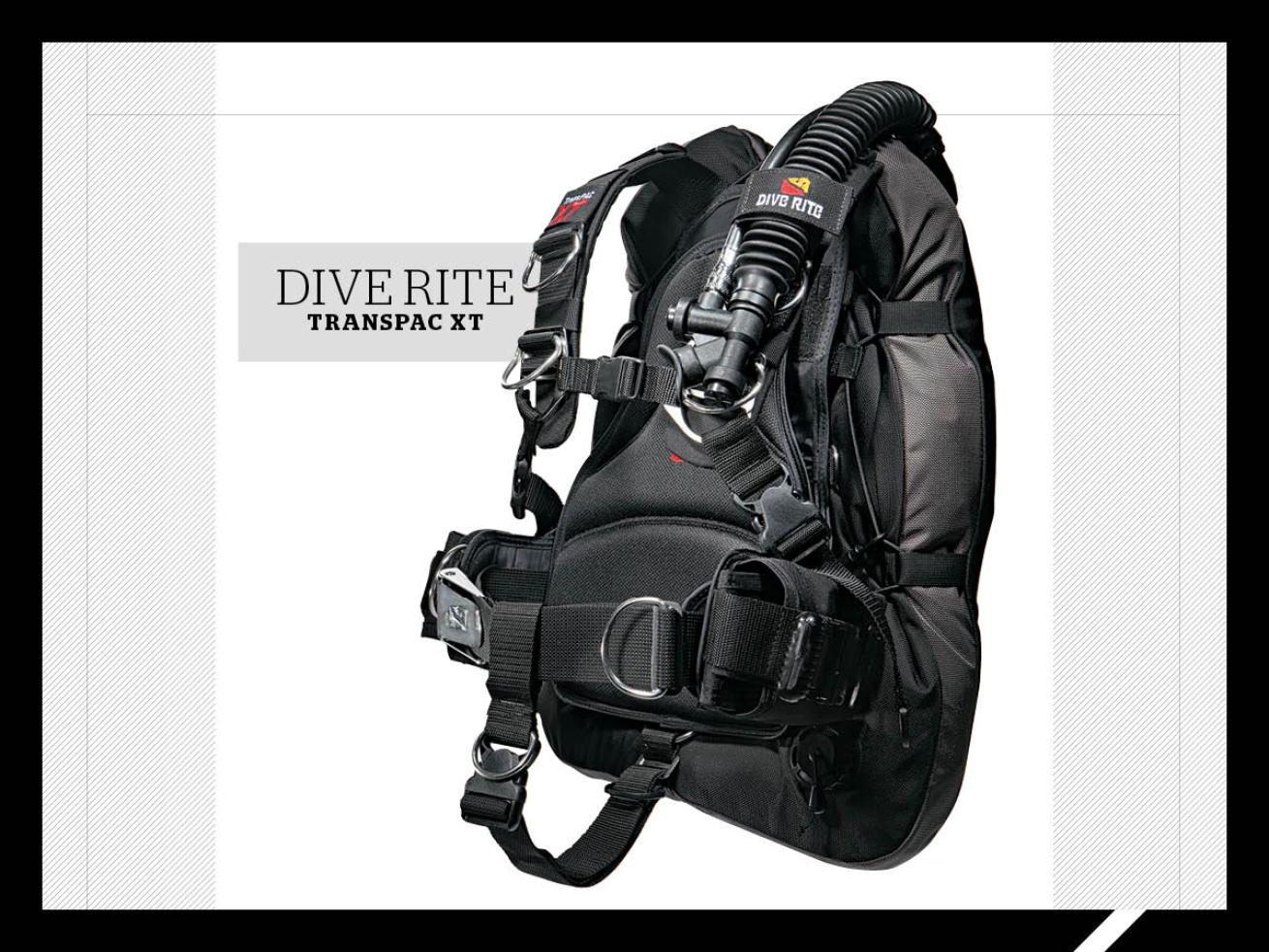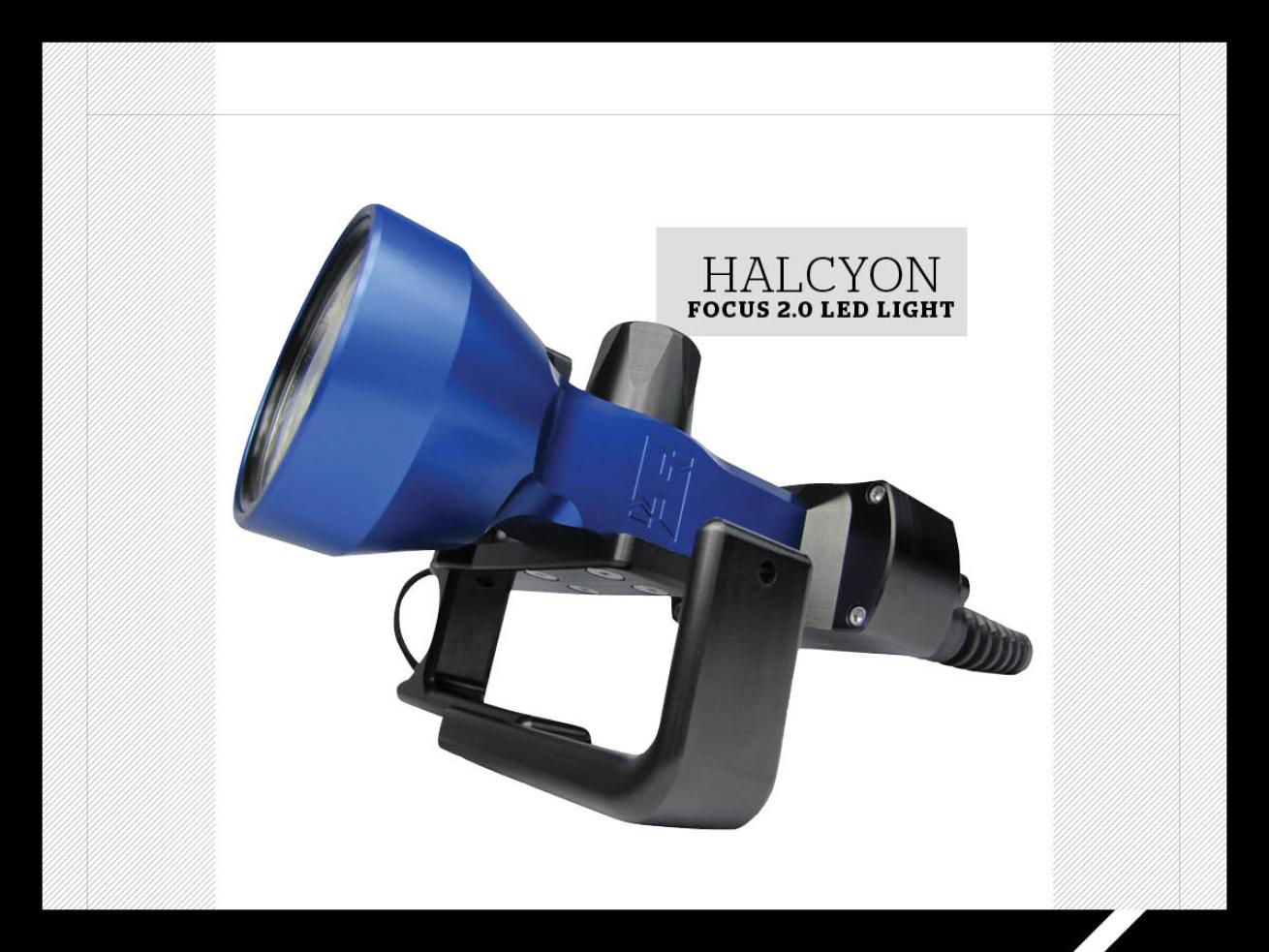What Does It Take To Become A Technical Diver?
For scuba divers ready to reach the next level, here's how to get technical.

Jennifer IdolThere comes a time for many scuba divers when they want to gain the training to go beyond recreational limits. Here's how to get started in technical diving.
At some point in every scuba diver’s life, you gaze into the abyss and think, I wonder what’s down there. Then you meet a technical diver who spins tales of secret wrecks, 300-foot wall descents, mind-expanding cave routes and bubble-free marine-life close-ups — and you’re on the hook. Atop the great pyramid of dive training, tec divers enjoy a rare view. There’s always room for one more, but only with the proper mindset, the right equipment and a qualified guide to show you the way.
“As a starting point, the definition of ‘technical diving’ is somewhat in the eye of the beholder,” says Doug Ebersole, a cardiologist from Lakeland, Florida, who moonlights as a closed-circuit rebreather (CCR) full trimix instructor. “For me, technical diving includes diving outside the recreational limits for depth, diving in ‘physical’ overhead environments — inside wrecks, in caves, under ice — diving with a ‘physiologic’ overhead environment (decompression obligation) or rebreather diving.”
“Technical training changed my view on scuba diving as a whole,” says Cristina Zenato, a veteran course director, full cave instructor, and extended range and advanced nitrox with decompression procedures instructor from Freeport, Grand Bahama. “It made me a more aware diver, a more competent diver and a more responsible diver, plus it has kept my mind engaged, my body challenged and my skills fresh.”
“I never dreamed I’d enjoy technical diving, but it just sort of found me,” says Becky Kagan Schott, a Philadelphia-based technical and CCR instructor, cave enthusiast and Emmy award-winning underwater cinematographer. “I’m attracted to shooting places no one has photographed before, and I’ve discovered so many incredible environments thanks to technical diving.”
“Technical diving has allowed me to see and do things that wouldn’t be possible, or safe, without the redundancy it teaches you,” says British master scuba diver trainer and CCR instructor Gemma Smith. “It’s also taught me discipline and self-awareness, whether I’m doing a 500-foot ocean exploration, a 2-mile cave penetration or a 30-foot dive in the Caribbean.”
THE RIGHT REASONS
“A lot of people get into technical diving because there is a particular dive they dream of doing,” Smith says. “I was desperate to dive a wreck called the Salsette in the English Channel, but it lies at 150 feet, so I started twinset diving and learning deco diving and accelerated decompression because of that wreck.” “For some the motivation is discovery, for others it’s self-improvement and even the challenge of diverse gear and thought processes,” says Zenato.
“There is a small niche of people who just want ‘to go deep’ to say they have done it, which is an incredibly poor reason to take up technical diving,” Ebersole says. “This type of diving carries some increased risks, and those risks need to be justified by the benefits for that individual diver, so the most common motivation for tec diving I have found from my students is to see something or do something they can’t at their current level of training.”
THE RIGHT FOUNDATION
“There are different levels for tec diving, and they are designed to help a diver grow and improve,” says Zenato. “Two that are very much necessary even to start are self-awareness and situational awareness.”
“First and foremost, a diver wanting to pursue technical diving should have good buoyancy control, good trim and be comfortable with a variety of propulsion techniques: modified flutter, frog kick, et cetera,” Ebersole says. “Unfortunately, the rush to certify recreational divers quickly has resulted in a lot of recreational divers who do not have these skills.”
“Have a good understanding of diving physics because that is the foundation for future learning,” Kagan Schott says. “ Courses such as Intro to Tec or Advanced Nitrox and Decompression Procedures will help set up divers for success, especially if they eventually want to dive a rebreather.”
“Take your time, do the skills practice and enjoy the training dives,” says Smith. “It’s important not to rush through courses, no matter how keen you are.”
THE RIGHT INSTRUCTOR
“Choosing the right instructor can be difficult, so do your research and talk to past students,” Kagan Schott says. “It’s also a good idea to take classes from different instructors to learn different skills and knowledge from each of them.”
“I have always picked instructors who are passionate, active divers who are out there diving for their own enjoyment after work,” says Zenato. “It is important to talk to the instructor and ask questions that can give you an idea of how the two of you will work together.”
“Pick an instructor who specializes in what you want to learn,” Smith says. “Just because they teach a fantastic cave class doesn’t mean they will be the best for a particular rebreather unit.”
“It’s the instructor, not the agency, that is the most important factor when it comes to training, so students need to find a professional who teaches in a style they’re most comfortable with,” says Ebersole.
“The best instructors have a strong understanding of the physiology of technical diving and can effectively impart that knowledge while at the same time teach the necessary skills to make someone a safe technical diver.”
THE RIGHT GEAR
“Talk to your instructor about equipment,” Zenato says. “Remember that one size does not fit all and not all gear will be suitable for all environments, so start with what you know you will be using the most.”
“Divers should buy a back plate, harness and wing system right away, because it can be used with a single tank, doubles and many rebreathers,” Kagan Schott says. “A good technical diving computer will be helpful as well.”
“Having my own regulators is very important to me,” says Smith. “And I make certain they are well looked after, serviced and trustworthy to deliver what will keep me alive.”
“High-quality technical diving equipment is expensive, but you get what you pay for,” says Ebersole. “If you are someone who is always looking to cut corners when it comes to cost, technical diving is not for you.”
Some Dive Gear Suggestions To Get You Started
SHEARWATER PERDIX AI
Price: $935, tranmitter $350, bundle $1,175 | Info: shearwater.com

Courtesy ShearwaterThe Shearwater Perdix AI offers tec-diving capabilities in an easy to use dive computer.
With a large, colorful LED screen, the Perdix AI off ers easy-access data displays that can monitor up to two cylinders at a time, perfect for sidemount diving. The two-button interface can be used to customize the display, and the unit boasts multiple diving modes and a user-replaceable AA battery. The original Perdix was ScubaLab's Testers Choice in the 2016.
DIVE RITE TRANSPAC XT
Price: $419 | Info: diverite.com

Zac StovallThe Dive Rite Transpac XT harness is designed to handle a wide range of configurations.
This harness is designed to handle a wide range of configurations, thanks to a modular design that can accommodate everything from single to double tanks, sidemount and rebreathers with simple adjustments and wing variations. Other features include six D-rings, a soft back plate and a variety of sizes, including a range just for women.
HALCYON FOCUS 2.0 LED PRIMARY LIGHT
Price: $1,347.22 | Info: halcyon.net

Courtesy HalcyonThe Halcyon Focus 2.0 dive light is depth rated to 300 feet.
With 80k lux of light output, the adjustable focus aluminum light head will illuminate whatever you are exploring. It is depth rated to 300 feet and is equipped with two light output options. Don't forget to bring a spare! Check out ScubaLab's latest dive light test.










